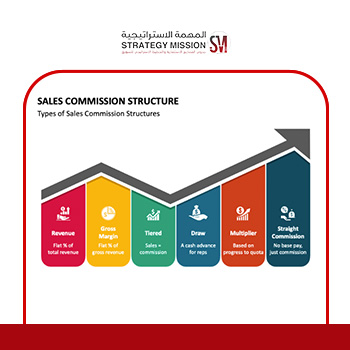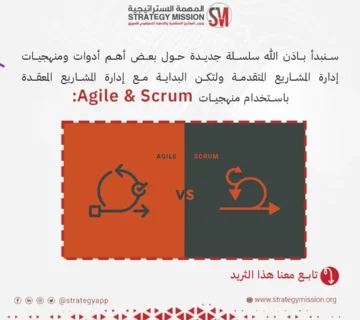Sales Commission Structure
It is very important to establish a clear commission policy or incentives for managers and salespeople in companies and businesses. In fact, from what we see in many business entities, the ambiguity of this policy and its random change causes many sales efficiencies to be lost and this may lead to an imbalance in the company’s revenues and thus achieve avoidable losses.
In this article we review a range of points including:
– What is the importance of commissions and incentives policy?
– Some types of commission structure with some examples.
– How can commission be linked to KPIs according to ISO 9001 requirements?
– When can the target or target of sales be increased and upgraded?
Follow M Assistant’s answers in the following tweets below…
Do not forget to request our services in the field of economic feasibility studies, strategic analysis and marketing plans. Use the following form:
https://strategymission.org/request-services-ar/
At the outset, let’s all agree on the following points:
– Target OTE or a unified target cannot be set for all sales staff! The objective must be commensurate with the target market – target area – target products, market size, competition size – qualifications, expertise, delegate or sales manager grade… etc.
– The high commission ratio associated with a fictional and illogical target is useless.
– The commission ratio is an essential part of the pricing strategy. In describing the commission policy, it is necessary to link the ratios to the discount powers so that the sales team does not abuse its pricing discount powers or the payment facilities granted.
– This policy of stimulus rather than threat, it is therefore necessary to distinguish between negligence in achieving Target from those who are unlucky and unsuccessful despite effort and good reasons. We therefore always advise not only to link commission to sales and collections but also to a set of measurable objectives such as:
Number of visits.
Number of calls.
… etc. From sales activities…
– Some types of commission structure with some examples.
- Structure the comics by linking it to a percentage of the total sale regardless of Target’s specific status.
Example: If your company sells a service or product for SAR 500 at a commission rate of 10%, the sales representative will earn SAR 50 each time they sell this service or product.
When to use: This kind of sales commission structure works best with products and services that have a specific price point and have a high profit margin.
They are also favourable for companies trying to gain market share or enter a new market because they are less likely to focus on profit and are more interested in achieving a larger business goal.
It should be noted that revenue commission plans usually fail to conform to larger and broader objectives, especially when an enterprise grows up and expands and the product or service becomes more popular and sells itself.
– Some types of commission structure with some examples.
- Commission structuring based on the target of the sales team operating in a specific area.
How it works: Sales generated within an area are recorded, and commissions generated are divided evenly among all sales representatives working within that area.
Examples: The sales share of the three representatives working in the Khobar city area is SAR 75,000. The first delegate sells a product worth SAR 30 thousand. The second delegate sells products worth SAR 26,000. The third representative sells a product worth 22,000 rials. In total, delegates generated R $78,000 in revenue, exceeding their target. For this reason, they split the commission by 20% evenly, earning SAR 5,200 for each of them.
When to use it: To succeed, your sales department must develop the working environment as a team first and each team member must be willing to contribute to the overall goal.





No comment